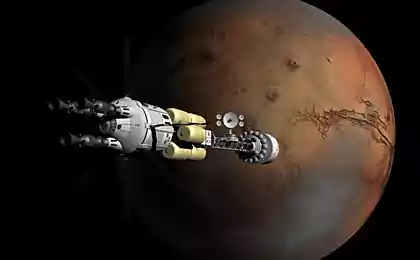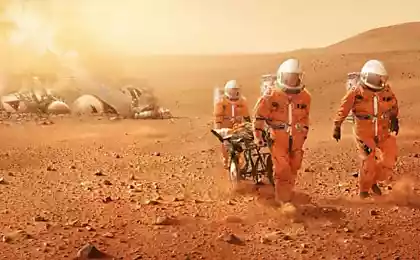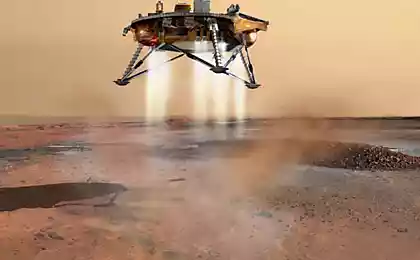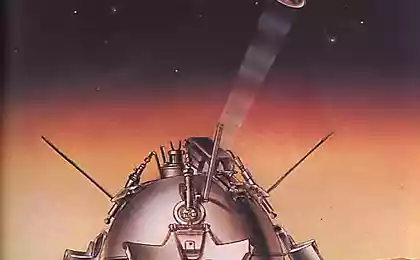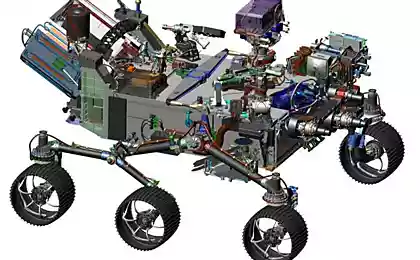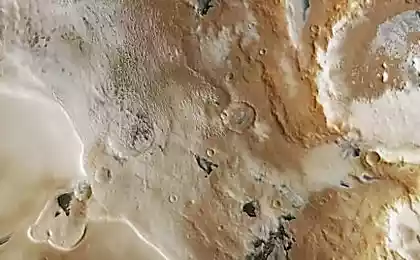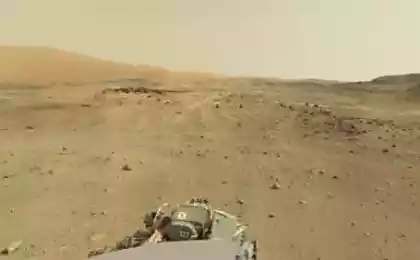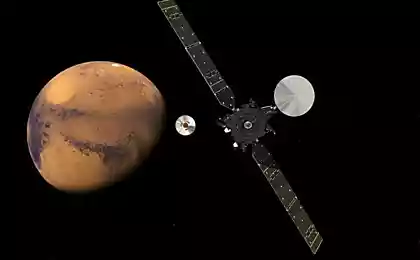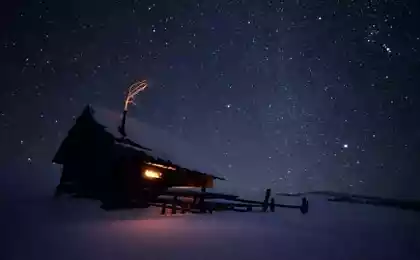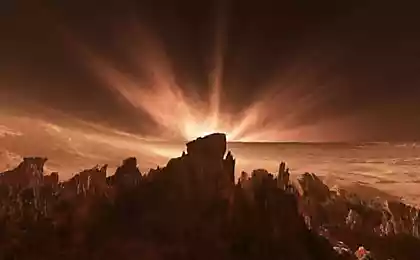610
Pictures Nasa description.
Description made itself on the basis of short NASA'vskih signatures to snapshots in English and their own knowledge, so please do not kick. =) If the theme is interesting, I can lay zavsegda other similar publications (mostly about open space and describing more).
We strongly recommend to see photos in full size, many pictures of great size! You can find them under the link.
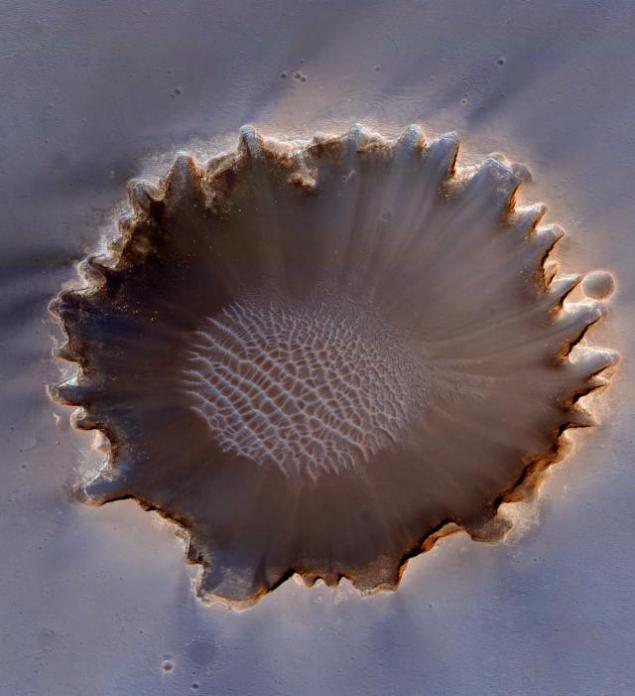
The descriptions above are photos
Next 13 photos
1) "Victoria Crater" - picture with the Meridiani Planum region of Mars. The boundaries of the crater was circled increase brightness. The reason for the formation of such boundaries Nasa considers the processes of diagenesis (in short - the transformation of sediment into the sediment in several stages). 800m in diameter.

2) "Exploding Spider" - the trough, similar to a spider. As understood, I, formed by passing a gas carrying dust through the pores in the ice, followed by melting of the latter. As a result, we see such a convoluted picture.
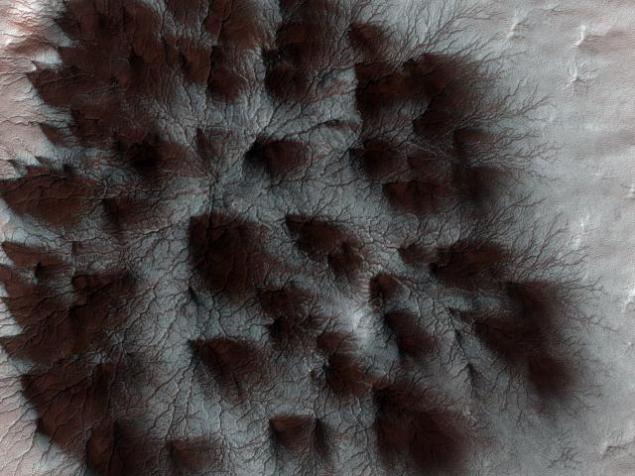
3) "Sand dunes and ripples in kratore Proctor (Proctor), Mars" - actually a subject. Light ripples are considered part of the dust. Brown - basaltic sand (igneous rock).
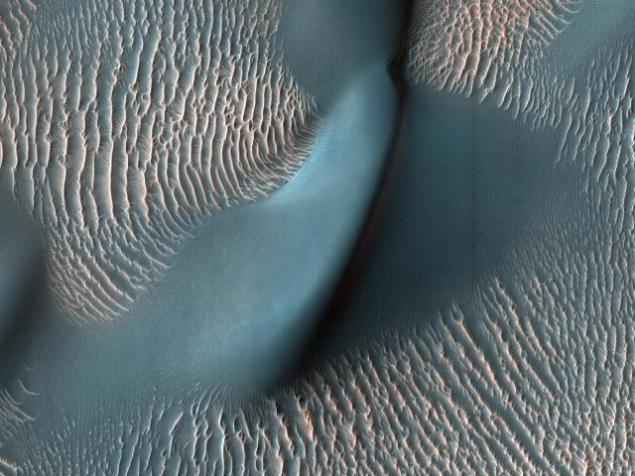
4) "The Martian moon Deimos» - as far as I know, Deimos is translated as "horror" from the Greek. It has a smooth surface, due to the blanket clastic or soil. Visible color variation. More red poverhnotyah on smooth, less - in the field of young craters. It is believed that this is caused by the interaction of the moon's surface from the space environment.
The diameter of Deimos - 12km. The orbital period - 1 day, 6 hours, 17 minutes 9. Chinese pinpoint steep hours.
Similar to the second satellite of Mars - Phobos (Phobos). Belle Phobos spread the following image.
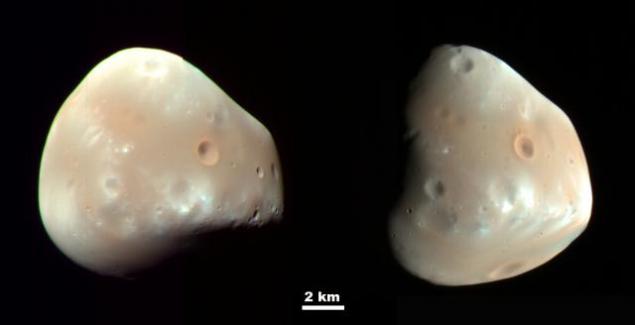
5) "Phobos" - well, just "fear" what a wonderful companion! The most "delicious" part of it is considered to be the crater Stickney, on the left side of the photo. Some scientists believe that it may have formed from the impact on Mars. Write that on the other side of the moon looks the same as this. That's surprising. O_o
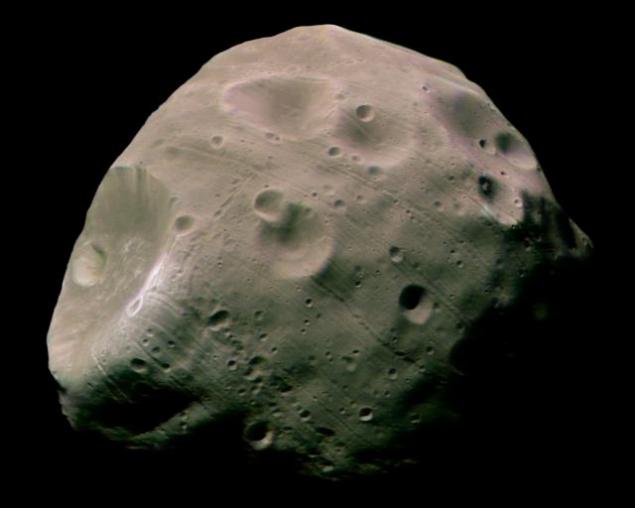
6) «Columnar Jointing on Mars» - bring original name, because here in perevole I am powerless. A certain "pillar separateness", is formed by cooling lava. The structure resembles Earth basalt of the Columbia River and the Colorado Plateau. It is believed that water covered.
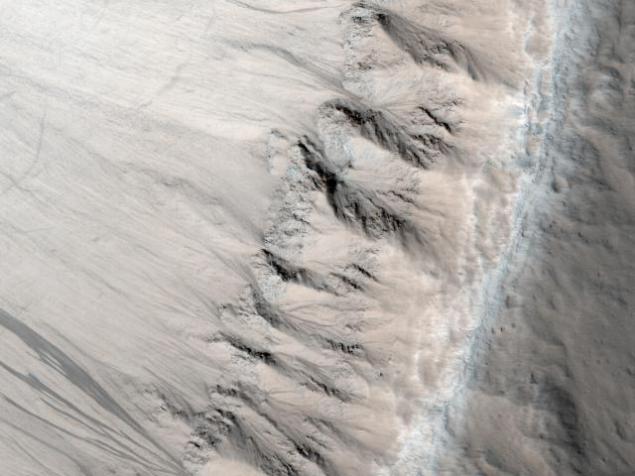
7) "The Earth and the Moon, as seen from Mars" - so you can see our planet from Mars, it's simple.

8) "The bright layered deposits in the valley" - what a beautiful charm of horror until the start
read about it in the language of the inhabitants of Albion.
The photo shows the change in the color of bright layered deposits on a plateau near Juventae
Chasma, Valles Marineris region (Marineris) on Mars.
Scientists have found that these bright layered deposits contain opaline silica (hmm, that kakbe
suggests to us that there could be a sea, or even water, if the origin of the opal -
hydrothermal, i.e. by the action of aqueous solutions) and iron sulphates.
But the appearance of iron sulphate has specifically attributed to the hydrothermally altered basaltic
rock (iron sulphide-bearing rocks, eroded (changed) by the action of cold water). From
and this formed the visible (see?), we canyons. The source of water is not possible to reveal.
Amen.
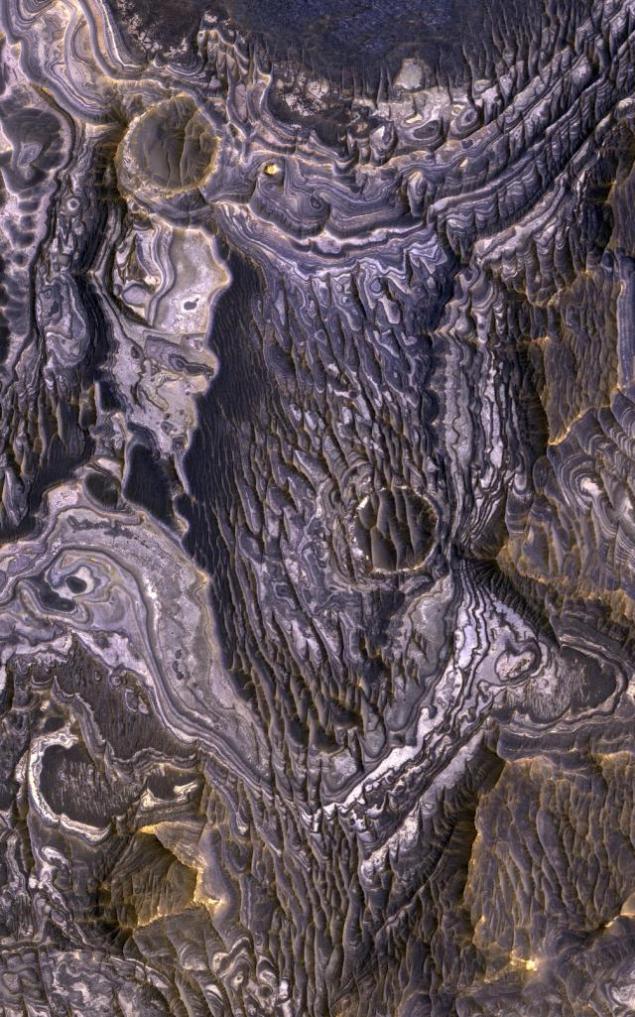
9) "light-colored deposits in Noctis Labyrinthus, Mars" - layers of ferrous sulfates and phyllosilicates (clays), between adjacent outliers. Nasa decided to keep a gentle mogza uneducated, nothing else we do not
add. From myself - buttes, mountains of it (columns) remaining after razruzheniya surrounding rocks.
Seen in the photo below and top right. At the upper left - dunes, as you might guess.
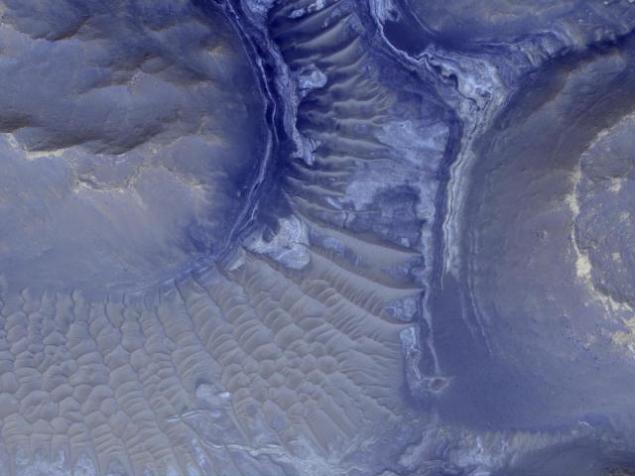
10) "Gullies at the edge of the crater Hale, Mars" - look so typical Martian Ovra, write to us Nasa, if that's what a typical Martian every morning watching from the window. On Earth, such pozdeystviem formed under water, but then you are not there !!! So scientists are scratching their heads, whether there is water on Mars. What follows is not particularly interesting description of how he was "typical" looks. About fan mounds and other dregs. I do not write.
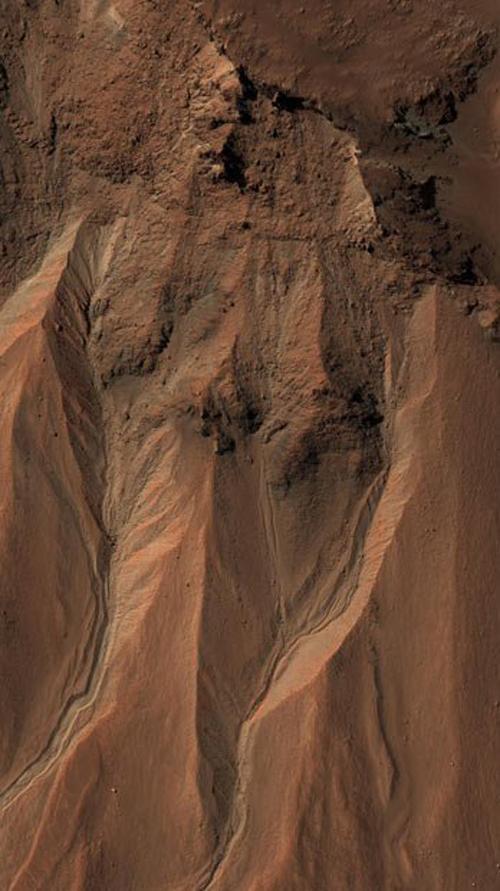
11) "Color Bars" - the image of the central pit of impact (meteorite) crater on Mars.
Descriptions virtually none. "A variety of rocks of different colors» = (
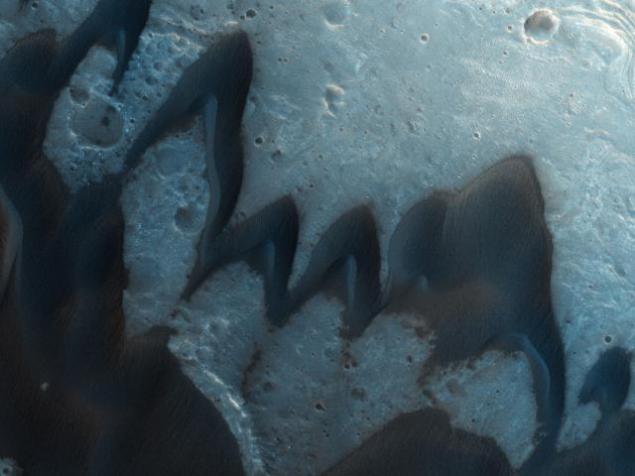
12) "The Martian dunes" - barchan dunes are very distinctive in form and importance,
For can tell scientists about the environment in which they were formed. They are formed under the influence of
Wind blowing mainly in one direction. Pointed arc dune located downwind. In
For a long time the dunes "travel" to the wind, move. The photo shows the
merge large dunes with small, are moving faster and eventually get one big
dune.

On the sim is all. Such publications used to do a few if you want to lay out.
We strongly recommend to see photos in full size, many pictures of great size! You can find them under the link.

The descriptions above are photos
Next 13 photos
1) "Victoria Crater" - picture with the Meridiani Planum region of Mars. The boundaries of the crater was circled increase brightness. The reason for the formation of such boundaries Nasa considers the processes of diagenesis (in short - the transformation of sediment into the sediment in several stages). 800m in diameter.

2) "Exploding Spider" - the trough, similar to a spider. As understood, I, formed by passing a gas carrying dust through the pores in the ice, followed by melting of the latter. As a result, we see such a convoluted picture.

3) "Sand dunes and ripples in kratore Proctor (Proctor), Mars" - actually a subject. Light ripples are considered part of the dust. Brown - basaltic sand (igneous rock).

4) "The Martian moon Deimos» - as far as I know, Deimos is translated as "horror" from the Greek. It has a smooth surface, due to the blanket clastic or soil. Visible color variation. More red poverhnotyah on smooth, less - in the field of young craters. It is believed that this is caused by the interaction of the moon's surface from the space environment.
The diameter of Deimos - 12km. The orbital period - 1 day, 6 hours, 17 minutes 9. Chinese pinpoint steep hours.
Similar to the second satellite of Mars - Phobos (Phobos). Belle Phobos spread the following image.

5) "Phobos" - well, just "fear" what a wonderful companion! The most "delicious" part of it is considered to be the crater Stickney, on the left side of the photo. Some scientists believe that it may have formed from the impact on Mars. Write that on the other side of the moon looks the same as this. That's surprising. O_o

6) «Columnar Jointing on Mars» - bring original name, because here in perevole I am powerless. A certain "pillar separateness", is formed by cooling lava. The structure resembles Earth basalt of the Columbia River and the Colorado Plateau. It is believed that water covered.

7) "The Earth and the Moon, as seen from Mars" - so you can see our planet from Mars, it's simple.

8) "The bright layered deposits in the valley" - what a beautiful charm of horror until the start
read about it in the language of the inhabitants of Albion.
The photo shows the change in the color of bright layered deposits on a plateau near Juventae
Chasma, Valles Marineris region (Marineris) on Mars.
Scientists have found that these bright layered deposits contain opaline silica (hmm, that kakbe
suggests to us that there could be a sea, or even water, if the origin of the opal -
hydrothermal, i.e. by the action of aqueous solutions) and iron sulphates.
But the appearance of iron sulphate has specifically attributed to the hydrothermally altered basaltic
rock (iron sulphide-bearing rocks, eroded (changed) by the action of cold water). From
and this formed the visible (see?), we canyons. The source of water is not possible to reveal.
Amen.

9) "light-colored deposits in Noctis Labyrinthus, Mars" - layers of ferrous sulfates and phyllosilicates (clays), between adjacent outliers. Nasa decided to keep a gentle mogza uneducated, nothing else we do not
add. From myself - buttes, mountains of it (columns) remaining after razruzheniya surrounding rocks.
Seen in the photo below and top right. At the upper left - dunes, as you might guess.

10) "Gullies at the edge of the crater Hale, Mars" - look so typical Martian Ovra, write to us Nasa, if that's what a typical Martian every morning watching from the window. On Earth, such pozdeystviem formed under water, but then you are not there !!! So scientists are scratching their heads, whether there is water on Mars. What follows is not particularly interesting description of how he was "typical" looks. About fan mounds and other dregs. I do not write.

11) "Color Bars" - the image of the central pit of impact (meteorite) crater on Mars.
Descriptions virtually none. "A variety of rocks of different colors» = (

12) "The Martian dunes" - barchan dunes are very distinctive in form and importance,
For can tell scientists about the environment in which they were formed. They are formed under the influence of
Wind blowing mainly in one direction. Pointed arc dune located downwind. In
For a long time the dunes "travel" to the wind, move. The photo shows the
merge large dunes with small, are moving faster and eventually get one big
dune.

On the sim is all. Such publications used to do a few if you want to lay out.
